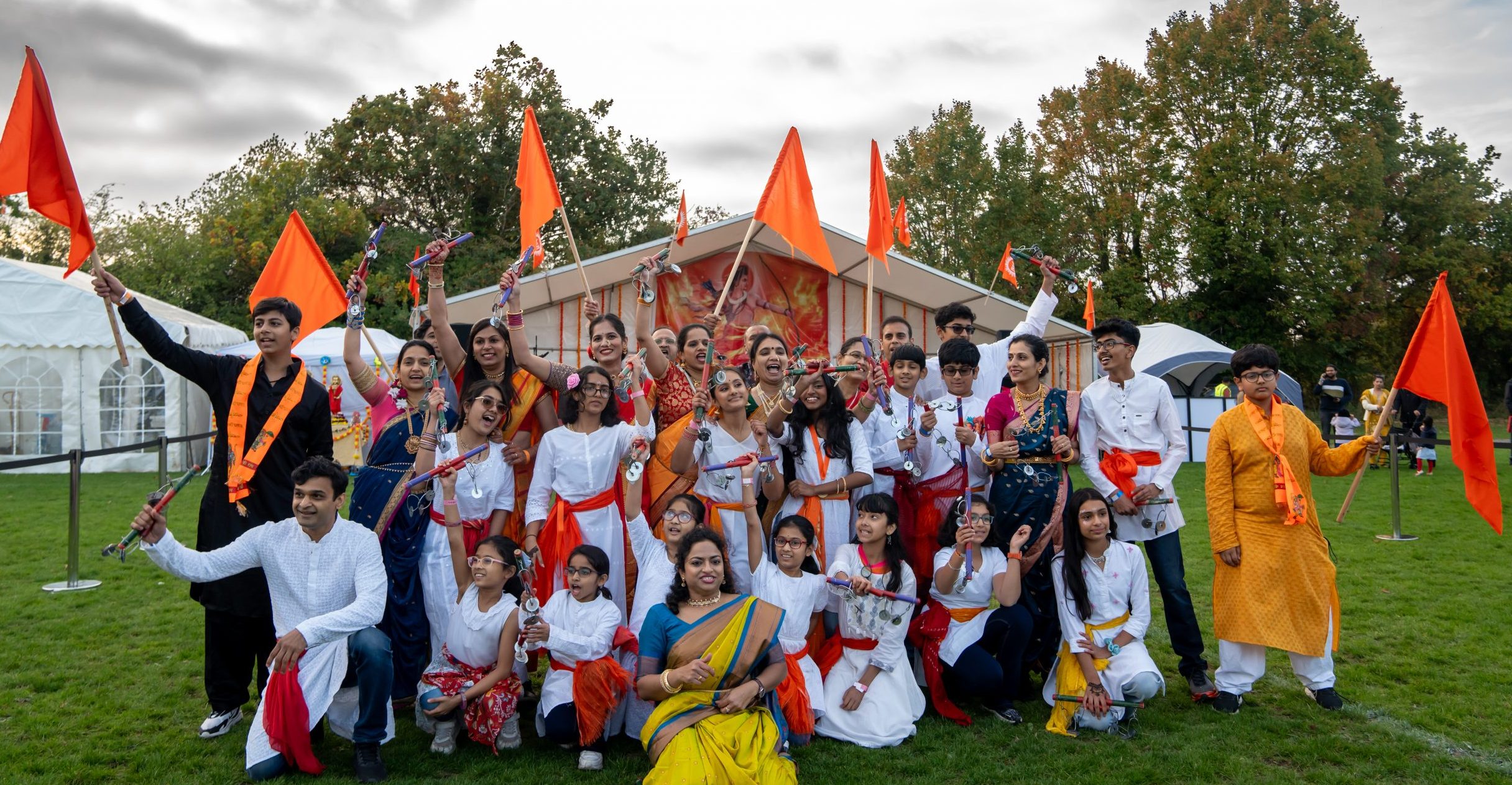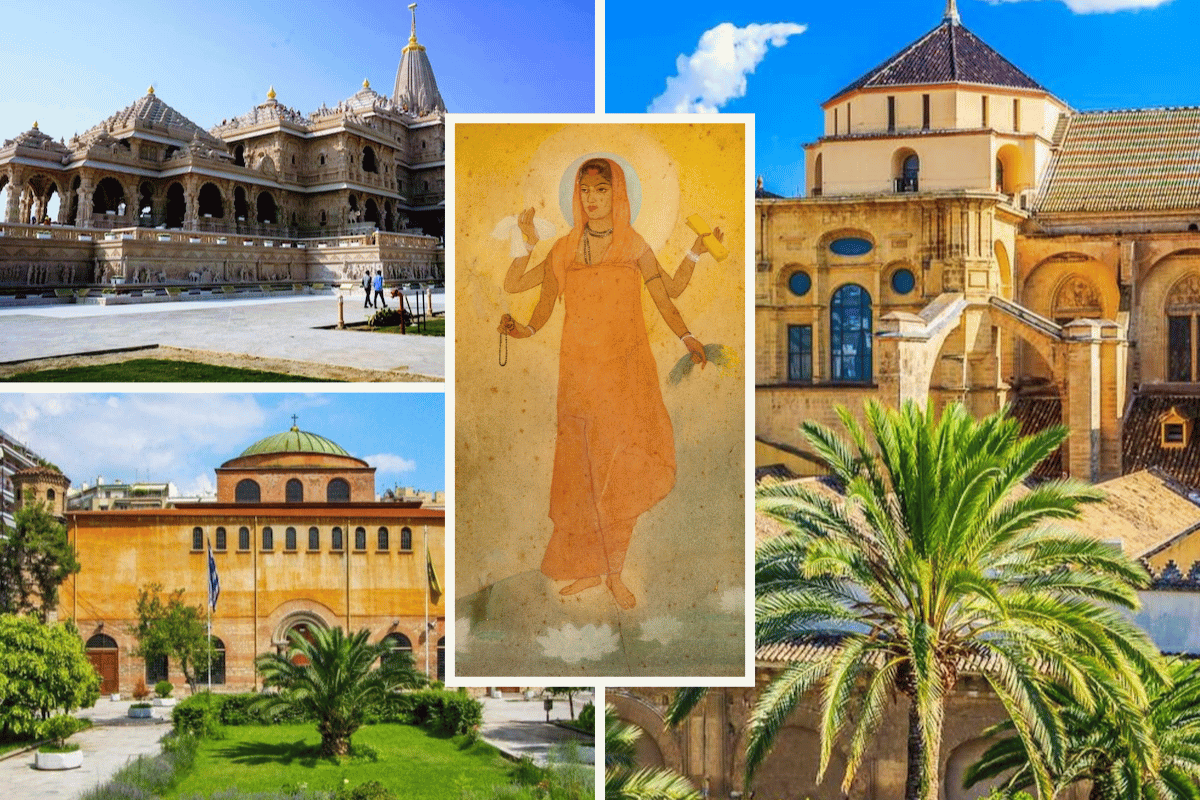
Ganesh Chaturthi, also known as Vinayak Chaturthi or Ganeshotsav, is a Hindu festival commemorating the birth of Shri Ganesh ji.

The festival is marked with the installation of Ganesh ji’s clay murtis (idols) privately in homes and publicly on elaborate pandals. Ganesh ji is known by 108 different names like Gajanana, Vinayaka, Vighnaharta among others. Every year, his birth is celebrated with a 10-day festival, during which four main rituals, namely Prana Pratishta, Shodashopachara, Uttarpuja, and Ganpati Visarjan are performed.
The worship begins with the pranapratishtha, a ritual to invoke life in the murtis, followed by shhodashopachara, or the 16 ways of paying tribute. Amid the chanting of Vedic hymns from religious texts like the Ganesh Upanishad, the murtis are anointed with red sandalwood paste and yellow and red flowers. Ganesh ji is also offered coconut, jaggery, and 21 modaks (sweet dumplings), considered to be Ganesh ji’s favourite food.
Significance
Ganesh ji is the bestower of higher intelligence that enables liberation in human life. He provides Siddhi – the divine powers, Buddhi — the intellectual power and Mukti — the liberation. Siddhi is attained by intellectual power and wisdom. His form is seen as an elephant, and He is the first to be worshipped in any ritual. In any ceremony, Ganpati is worshipped in the form of Vinayak — the One who removes all misfortunes and obstacles. He is also symbolically seen as the lord of all divine forces in the human body — externally and internally.
The very story of Ganesha’s manifestations holds the essence of Advaita Vedanta. He has been manifested out of the divine essence of Goddess Parvati. This is a reminder that we all are made up of the same, all pervading essence or the spirit though we may vary owing to the disparities in shape and form.
The celebration of Ganesh Chaturthi reveals that while we worship the divine with the form, we ought to bear in mind our formless reality. He has his vehicle a small mouse. The significance of riding on a mouse is the complete conquest of egoism. The holding of the ankusha represents His rulership of the world. It is the emblem of divine Royalty.
Rituals and Customs
The preparation for the festival begins months earlier with artisans crafting clay images of Ganesh ji in different sizes. These murtis are installed in specially decorated pandals (temporary structures used in religious events) or at homes.
The 10-day-long celebration follows the Hindu lunar calendar, with the biggest spectacle taking place on the last day called Anant Chaturdashi.
On the first day, amid chants of Ganpati Bappa Morya, devotees take the murti of Ganesh ji home, and after its installation, perform a ceremony to invoke His holy presence into the murti. This ritual is called the Prana Pratishtha, during which a number of mantras are recited, a special worship ceremony is performed, offerings of durva (strands of young grass), sweets, flowers, rice, coconut, jaggery, and coins are made, and the statue is anointed with red chandan (sandalwood) powder.
For the next 10 days the murti is worshipped every day and an arti is sung in the morning and evening. Lighting of lamps, incense sticks and decoration with flowers is important during these days.
Ganesh ji was born at midday, and consequently, it is considered to be the most auspicious time of the day for performing the rituals. Devotees make it a point to visit the various public displays during the festival.
Food — An Integral part of the Festivities
The innumerable festivals that are celebrated in Bhārat (India) are enriched with mouth-watering sweets and lavish meals. Each festival of our country unveils a treasure trove of flavours, with each region offering its own unique twist.
Sweets like laddoos, barfis, and mithais are a permanent fixture and one gets to see and eat them during most festivals. However, each festival has a distinct set of delicacies. A particular sweet — Modak/Kadubu/kozhakatta/modagam/Nevi (different names of the same sweet) is believed to be Ganesh ji’s all-time favourite.
He is in fact referred to as Modakpriya in the scriptures owing to His great love for these sweet dumplings. Hence, on the first day of Ganesh Chaturthi, devotees offer Him a bhog of modak. These sweet offerings were traditionally made out of rice flour and jaggery. Coconut rice is one of the most common offerings to the deity in Western India. Puran poli is another delicacy that is famous during this festival.
Significance of Ganesh Visarjan
Every puja in Hindu tradition comprises three stages — Avahan (invitation or invocation), puja (worship), and Yathasthan (sendoff). The puja follows as per the tradition and is performed by the family/priest in pandals. Yathasthan means giving a sendoff to the deity in a respectful manner after the prayers and thanking the Bhagwan for his blessings. The concluding uttarpuja is the final step in augmenting the absorption of these waves.
After performing this puja, the murti is shifted from its place. Ganesh Visarjan marks the farewell where the devotees give a sendoff to Ganesh ji in a grand manner to commemorate the conclusion of the celebrations.
It is said that ‘The divinity generated in the murti because of Pranapatishṭha (consecration) cannot last more than a day’.
One might ask that if this is so, how will devotees benefit from a twenty-one-day worship of Shri Ganesh ji during the Ganesh festival? The answer is that though the divinity in the murti is destroyed, the Chaitanya (divine consciousness) remains in the murti for 21 days. Again, since the murti is ritualistically worshipped during the Ganesh festival, the Chaitanya in the murti can increase as per the intensity of bhav (Spiritual feeling) of the devotees.
Ganpati Bappa Morya… Mangal Murti Morya…..!









